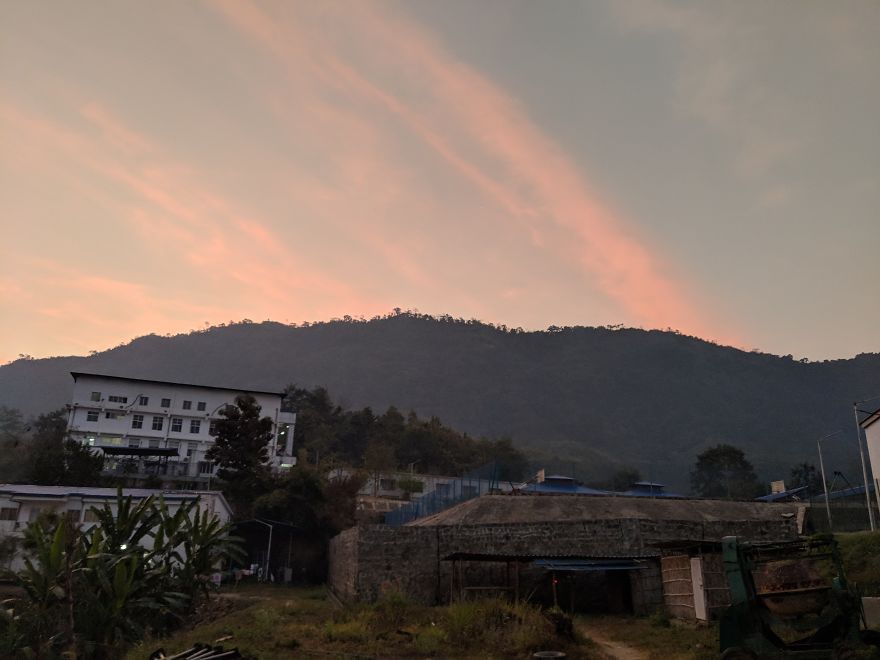Nagaland is the hilly state in north-east India which is mostly unexplored.
Khonoma, 20 km west from the state capital Kohima, is the first green village of India. With the population of about 1943 (2011 census), currently, around 750 people reside in the village due to migration.
Historically Khonoma has great importance. British faces several insurgencies from the fiercest Angami warriors, which is one of the major tribe of Nagaland. The first insurgencies against the British started at Khonoma in 1850 and lasted till 1879.
To reach Khonoma, one can hire a cab from Dimapur, currently, the only city in Nagaland having an airport and railway connectivity. In Khonoma, you can find a few homestays to spend a day in the village. However, public transport is not reliable in Khonoma.
National Institute of Technology Nagaland, Chumukedima, India
War memorial, Kohima
Image credits: en.wikipedia.org
Kohima War Cemetery is a memorial dedicated to soldiers of the 2nd British Division of the Allied Forces who died in the Second World War at Kohima, the capital of Nagaland, India, in April 1944.
Territory of Khonoma
“Nagas are not Indians, their territory is not a part of the Indian Union. We shall uphold and defend this unique truth at all costs and always” – Khrisanisa Seyie.
Way to Khonoma
Entrance gate of the village
Tribal symbol engraved on the wooden gate.
Terrace farming
Villagers heavily rely on terrace farming cultivating paddy and garlic.
Memorial
Memorial of the British Army Offcial killed by the Angamis warriors.
Khwehu
The one who was able to organise the feast for the community were considered eligible to construct the round circular structure called Khwehu. There used to be a feast of merit for the community. To hold this feast a ritual has to be performed in the memory of someone dear to you like your parents, grandparents, etc. The stone monoliths are erected in some rituals for a single person, while in other rituals, there are multiple stones erected in rows in memory of grandfather, father, wife, and children. In the feast, the entire village participates and cattle are killed to feed them. Often misunderstood with the symbol of wealth rather the objective of constructing the structure is to seek the blessings of the descendants to grow in prosperity and well-being.
Handloom
Naga lady weaving traditional Angami shawl.
A Naga style porch
Old hunting days
Now the hunting and deforestation are strictly prohibited by the village counsil to preserve the nature.
Cottage Industry
Semoma Fort
“The fiercest of battles were fought between the British and the Nagas during 1850-79 in the Semoma fort of Khonoma.
This fort was described one of the strongest in the Northeast by Maj. John Butler of the British Army.”
The stone structure is now converted into the community hall.
Dzuleke Valley
Dzuleke Valley, not well connected, is 20 km from the Khonoma, located at the boarder of Kohima district and Peren district. It was like the hidden tresure between the hills.
Little Host
Meet her at Poilwa, Peren district.
A typical village of Nagaland, Kohima district
Kisama, Kohima
2Kviews
Share on FacebookBeautiful. I would have never heard of this place if not for you photos. So very, very gorgeous and interesting.
It's beautiful! I think the photos are wonderful actually. I'm not a photographer by any means though. I enjoy seeing other cultures and learning about their unique history.
Thanks Nagaland is one of the remote states of India of whose culture even most of the Indians are unaware of.
Load More Replies...Beautiful. I would have never heard of this place if not for you photos. So very, very gorgeous and interesting.
It's beautiful! I think the photos are wonderful actually. I'm not a photographer by any means though. I enjoy seeing other cultures and learning about their unique history.
Thanks Nagaland is one of the remote states of India of whose culture even most of the Indians are unaware of.
Load More Replies...
 Dark Mode
Dark Mode 

 No fees, cancel anytime
No fees, cancel anytime 


































































37
10